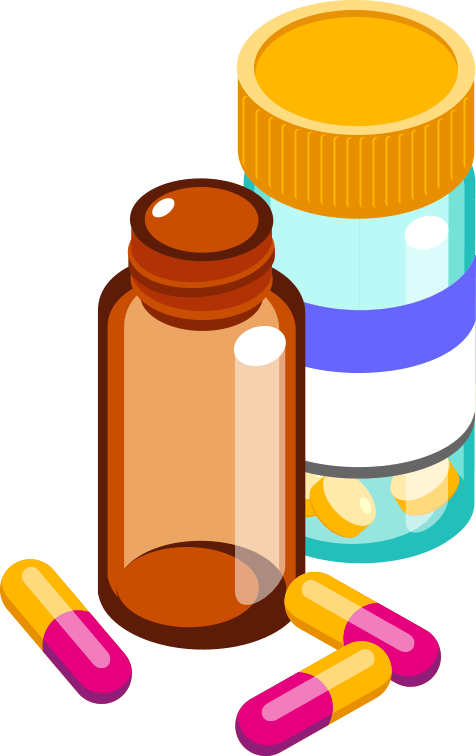Doctor, I took cold medicine a few days ago, and today I just found out I’m pregnant. Will this medication cause birth defects? Can I keep the baby?
In the pharmacy outpatient clinic, we almost encounter this question every day.
Drug-induced malformations are not as frightening as they seem.
Genetics is the real “big boss”; drugs are just the “minor characters.”
Drugs are one of the important factors causing birth defects, but 94% of birth defects are due to genetic factors, while exposure to teratogens accounts for 6%, with drug-related birth defects being less than 1%.
However, birth defects caused by drugs can be prevented, which is why everyone pays close attention to them.
Not all drugs cause teratogenic effects.
Some medications are relatively safe to use throughout the pregnancy, such as acetaminophen for fever and pain relief, and antibiotics like penicillin and cephalosporins.
The effect of medication on the fetus varies at different stages of pregnancy.
Within 2 weeks post-fertilization: a period when drugs are less likely to cause teratogenic effects.
At this time, the fertilized egg has not yet undergone differentiation and development into tissues and organs, so the impact of drugs on the embryo can either be total or none. “Total” means the drug has an effect, directly leading to embryonic death or early miscarriage. “None” means the embryo continues to develop without being affected.
However, there are exceptions to this principle, mainly concerning drugs that are contraindicated during pregnancy: ribavirin, isotretinoin, methotrexate, and leflunomide, as these drugs have clear teratogenic effects and can remain in the body for 3 to 6 months.
Weeks 3-8 post-fertilization: a period of heightened sensitivity to teratogens.
During this time, the embryo undergoes significant differentiation, and various organs are constantly forming. Using potentially teratogenic drugs during this stage may interfere with the normal differentiation of organs, leading to congenital malformations of organs/tissues.
Weeks 9 post-fertilization to term: a period with low sensitivity to drug-induced teratogenic effects.
The organs are basically formed, but the reproductive system, teeth, and nervous system are still continuing to differentiate. During this period, the teratogenic effects of drugs are diminished, but it is still necessary to avoid drugs that may impact the reproductive system, teeth, and nervous system, such as: tetracycline antibiotics (tetracycline, minocycline, tigecycline) which may cause permanent discoloration of baby teeth and inhibit bone growth when used in late pregnancy; fluoroquinolone antibiotics (norfloxacin, levofloxacin, ciprofloxacin) which have toxic effects on developing cartilage.
When assessing the effects of medications during pregnancy, the date of fertilization is crucial. It’s best to have a professional doctor make a comprehensive assessment based on early ultrasound results, timing of intercourse, and the last menstrual period, as personal calculations might not be accurate.
It also depends on the dosage and duration of medication use.
In addition to considering when the medication was taken, we also need to look at the dosage and duration of use. Generally speaking, the smaller the dose, the lesser the potential impact of the drug; the shorter the duration of use, the lesser the drug’s impact.
So, if you discover you are pregnant after taking medication, don’t panic; consult a doctor or a professional pharmacist first. We will give comprehensive advice based on the actual medication situation and the individual patient’s circumstances.
Medication Guidelines for Pregnancy
First trimester, exercise caution with medication.
Keep doses small and courses short.
Choose single agents, avoid combinations.
For chronic disease patients, consult before pregnancy.
Teratogenic drugs require professional evaluation.
Medical reminder: Pharmacy outpatient clinic at Hongfangzi Hospital.
Medication pharmacy clinic for pregnancy and lactation.
Tuesday and Friday afternoons (*Huangpu/Yangpu District)
Internet hospital pharmacy outpatient clinic.
Tuesday and Friday afternoons (online)
References:
1. Uptodate: Causes of congenital anomalies.
2. The Genetic Basis of Human Anomalies. In: Human Malformations and Related Anomalies.
3. Risk Factors for Birth Defects.
4. Obstetrics and Gynecology (9th edition, People’s Health Publishing House).
5. Drugs during pregnancy and lactation.
Written by: Pan Jiaqian
Reviewed by:


